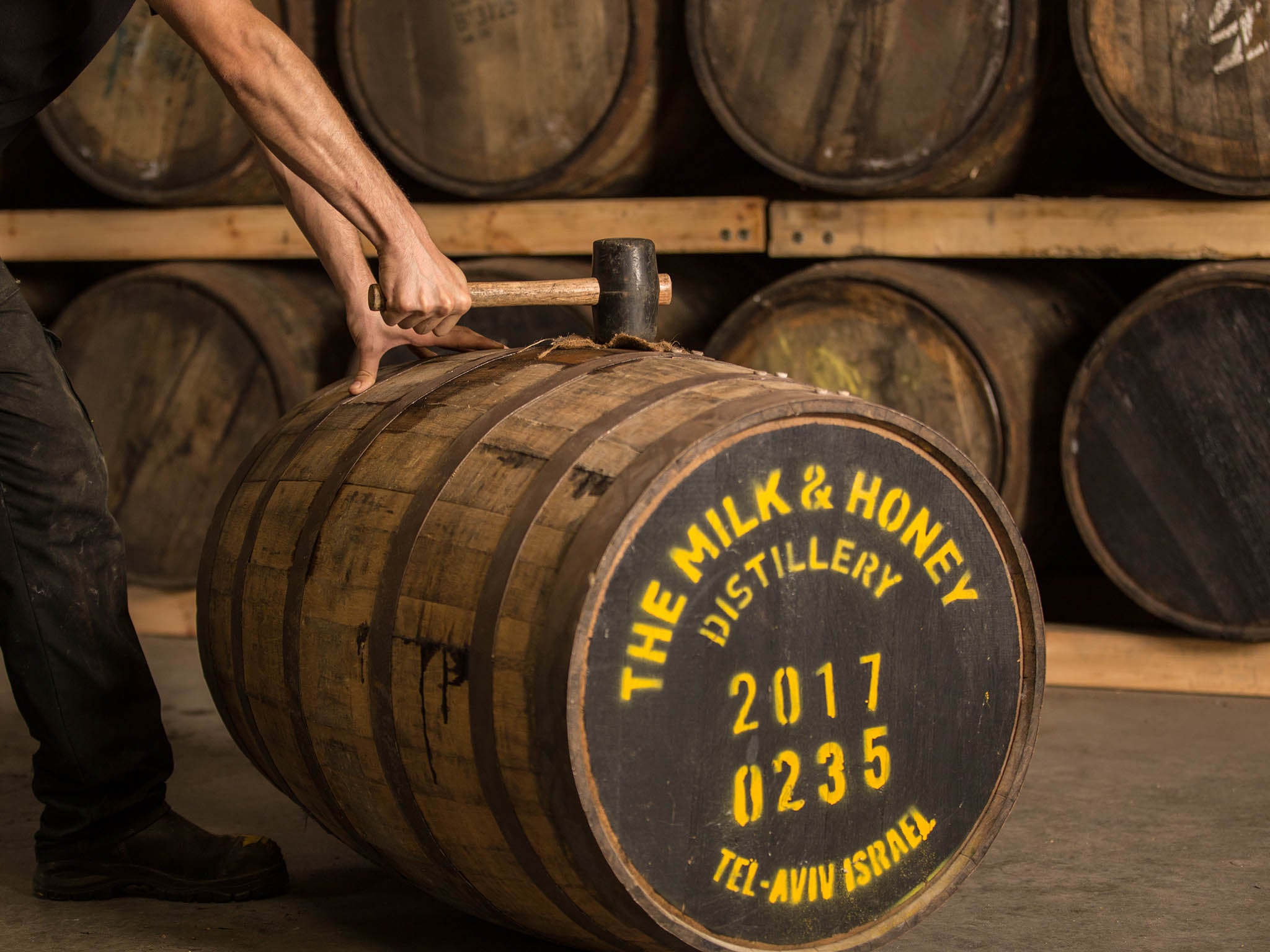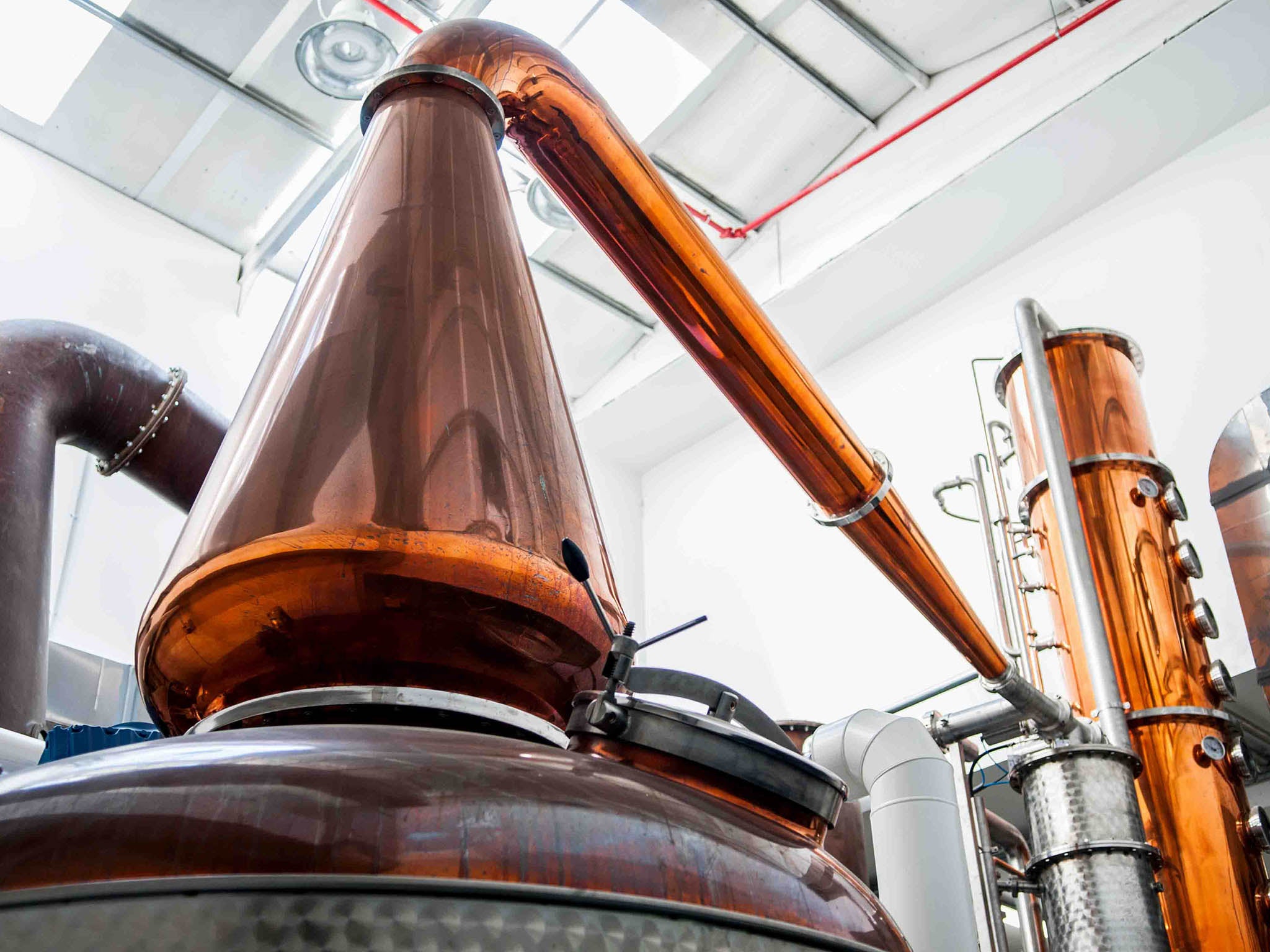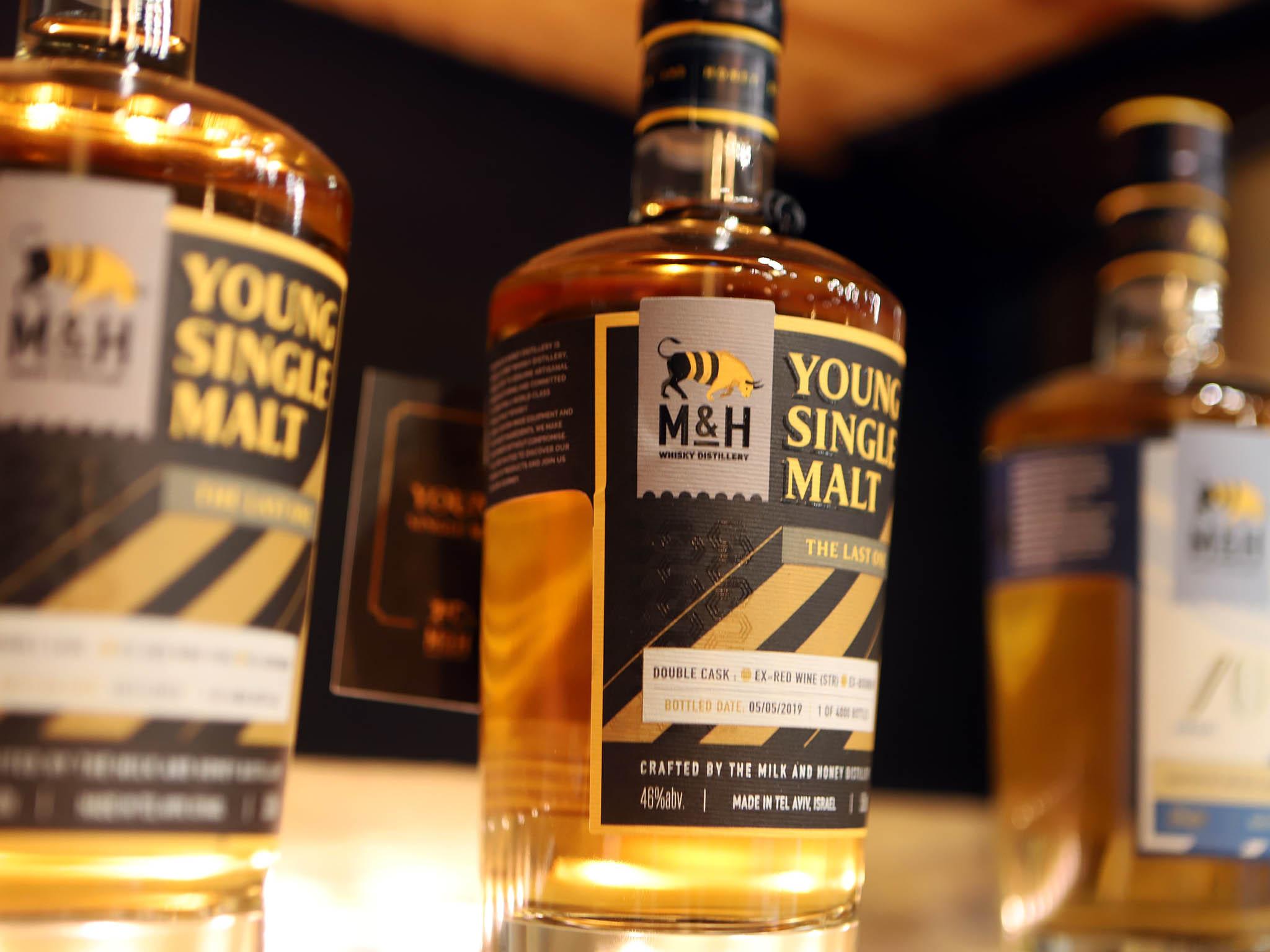Milk & Honey, Barley & Humidity: How a whisky revolution is happening in Israel
First it happened to beer, while craft gin has become unstoppable and rum is also getting the treatment. But, how can this tipple that’s so constrained by definition be reinvented? Brendan Hodrien finds out how, in the most unlikely of destinations

Your support helps us to tell the story
From reproductive rights to climate change to Big Tech, The Independent is on the ground when the story is developing. Whether it's investigating the financials of Elon Musk's pro-Trump PAC or producing our latest documentary, 'The A Word', which shines a light on the American women fighting for reproductive rights, we know how important it is to parse out the facts from the messaging.
At such a critical moment in US history, we need reporters on the ground. Your donation allows us to keep sending journalists to speak to both sides of the story.
The Independent is trusted by Americans across the entire political spectrum. And unlike many other quality news outlets, we choose not to lock Americans out of our reporting and analysis with paywalls. We believe quality journalism should be available to everyone, paid for by those who can afford it.
Your support makes all the difference.The Cold War was underpinned by one salient belief held by the Americans: The Domino Theory. This was the notion that if one nation fell to communism then those around them would be toppled by the left in turn.
The beginning of the 21st century has seen its very own Domino Theory play out in the drinks industry, its very own series of revolutions – the craft revolutions.
Beer was the first to go, this had been bubbling away for decades in the states, Lagunitas Brewing Company founding its cell in 1993, the movement exploded through Europe in the last decade.
After beer was conquered, beanie-wearers and those with ironic moustaches turned their hipster glasses to the next night out – gin. The gin industry was blitzkrieged and rum is about to sign a treaty that leaves it relatively unaltered as long as long as it joins the Speakeasy Cocktail Corps.
But one ancient tipple has always remained at arm’s length, untouchable and neutral – whisky.
How could you make a craft whisky? If any whisky was altered as beer and gin were when their constitutions were rewritten (some drastic method and recipe departures) then it would no longer be a whisky, merely a liqueur. The parameters for whisky are too narrow (it must be aged in oak, it must be aged this many years and must contain this much of that) and frankly, if it ain’t broke, don’t fix it.
And because of these restrictions a craft whisky revolution seems impossible, so it is apt that the place the revolution appears to be underway is the last place you’d look, a place seemingly impossible to distill whisky: Tel-Aviv.
The Tel-Aviv climate is hostile. It has around 300 days of sunlight, temperatures of 40C and humidity levels reaching 90 per cent which all fuse together into an oppressive miasma that leaves the air in the streets a thick, tobacco and salt laden soup.
If you navigate this soup, in the shadow of Maccabi Tel-Aviv’s stadium, 10 minutes’ walk from the ancient port city of Jaffa, is the M&H Whiskey Distillery.

Named after the biblical Jewish promised land of milk and honey (and later abbreviated to avoid consumers thinking there’s milk in the whisky), this renegade distillery is making arguably one of the most interesting spirits in the world.
And that's due to the company’s dedication to, and embodiment of, the spirit of Tel-Aviv: the maelstrom meshing of old and new, the traditional and the progressive and the unique terroir.
The company was founded by tech entrepreneur – and longstanding Tullamore Irish whiskey drinker – Gal Kalkstein in 2012 and distillation began in 2015. Hoping to emulate the Tullamore experience, Kalkstein explains he “wanted to make a whisky that you put in the middle of the table and drink with your friends, talking away until you don’t realise the bottle is finished”.
Crucial to the foundation of the distillery was the consultancy of the late Dr Jim Swan, a much loved, revered and missed figure in the whisky world.
Dr Swan was known for his role in enabling start up distilleries, a quick tour will highlight his presence in every nut and bolt of M&H; head distiller Tomer Goren pointing out pipes and stills and processes that Swan designed to marry the Tel-Aviv climate.
One of Dr Swan’s innovations stands out above the rest: the use of STR casks. Standing for shaved, toasted, re-charred, this operation involves shaving red wine soaked oak from the surface of the barrel, toasting the cask with oak chips and then recharring the wood. The process serves to remove harsh tannins and foreground oakier characteristics such as vanilla, without fully losing the red wine character of the cask.
While the team follow the Scotch model for the distillation process, here they have their own unique tweaks to their equipment to suit the circumstances and location grants them maturation believed to be two and a half times the speed of that in Scotland.
The maturation is accelerated by the blistering heat and humidity, producing remarkable results - the triple cask young single malt (aged in ex-bourbon, Islay and STR casks) has a simply unbelievable smoothness, boasting a depth and character well beyond its years. But it’s not years old, it’s only been aged for six months.
“We have barrels everywhere,” says Tomer. Some are in the mountains to the north, some are maturing 382m below sea level atop Herods Hotel beside the Dead Sea, aging in the lowest place on earth, subject to a salty humidity unparalleled in the whisky world.
Though it’s not all roses for Milk & Honey, as this particular maturation has the drawback of an 8-10 per cent angel share, with Goren conceding the barrels “can’t mature there for three years, which we noticed after seven months”.
It is not just how the distillery uses its unusual geography that sets it apart, it is the youthful exuberance and curiosity.

With whiskies ageing in pomegranate wine casks, among other top secret experiments, the distillers are constantly trying to innovate, whether that be the distillation process, the cask choice or where they leave the barrels – the desert being the next stop.
But is this all just a case of the distillery finding its feet, taking an almost Pollock approach of throwing a lot at the wall and seeing what sticks? Tomer says: “Other brands already has its own profile, we will too but we will always try any new idea, we’ll try anything”.
This is evidenced in the plan for various special releases in the coming years. M&H’s open minded approach is grounded in targeting the craft market, a potentially double edged sword given Israel’s divisive place on the world stage.
But Gal is unconcerned by the politically aware tendencies of the craft market. “We hear a lot about people that don’t want to buy Israeli things but there are more people that want to buy interesting things,” he says.
The distilleries’ first commercial release whisky will arrive at the end of the year. At the minute the M&H portfolio includes two ardently Israeli gins (packed with botanicals from the spellbinding Levinsky market and famed Jaffa oranges) as well as a new make single malt and the aforementioned triple cask young single malt. It also produces the roots herbal liqueur, a sweeter expression bursting with almonds and accessible to a wider audience.
M&H uses English barley, French yeast, fermentation times ranging from 60-72 hours and barrels from revered distilleries such as Ardbeg to achieve this spectacular coming together of the old and the new.
With its young single malt finishing second behind Glenlivet in a blind tasting at Whisky Live Tel-Aviv, the distillery has already earned prodigy status, especially after beating off such esteemed company with a six month old malt.
Recent experiments in whisky haven’t done much bar emphasise existing characteristics or finish in a supposedly unusual cask, absurdly peated whiskies and beer barrel finishes are still highly drinkable forays away from established core ranges but it is simply a case of plus ça change and not daring to distill outside the box.
By looking toward their city, one that entrances you with its dichotomy of progressivism and tradition, (this religious hotbed recently had a 250,000 strong Gay Pride march) M&H has taken an age old spirit and is revolutionising the way we approach its production.
Being Israel’s first ever whisky distillery, M&H is full of the vitality of youth, it has a refreshing eagerness to be bold and brave, to fail and learn, to push boundaries and to constantly improve, the distillery has chutzpah.
Join our commenting forum
Join thought-provoking conversations, follow other Independent readers and see their replies
Comments